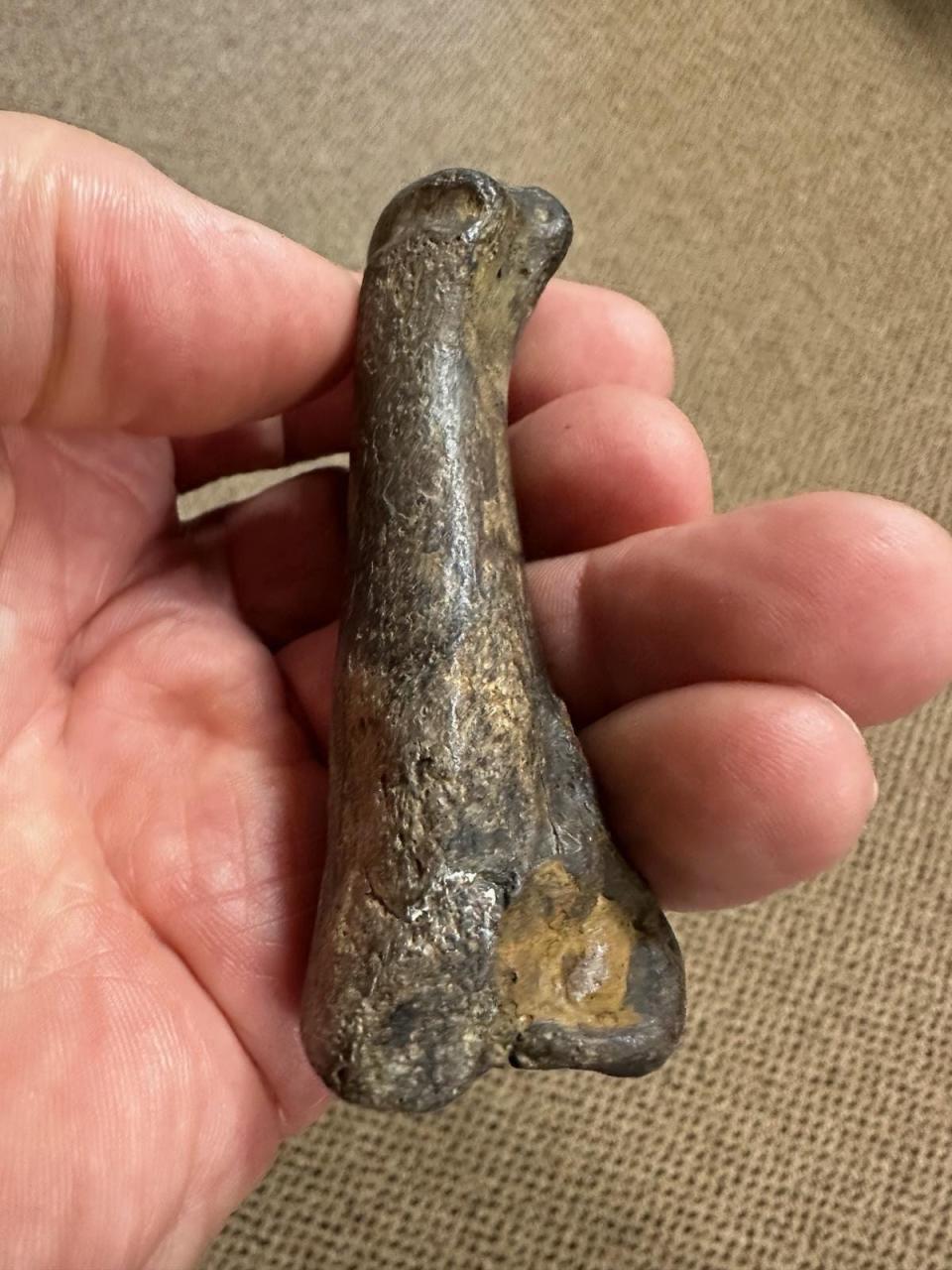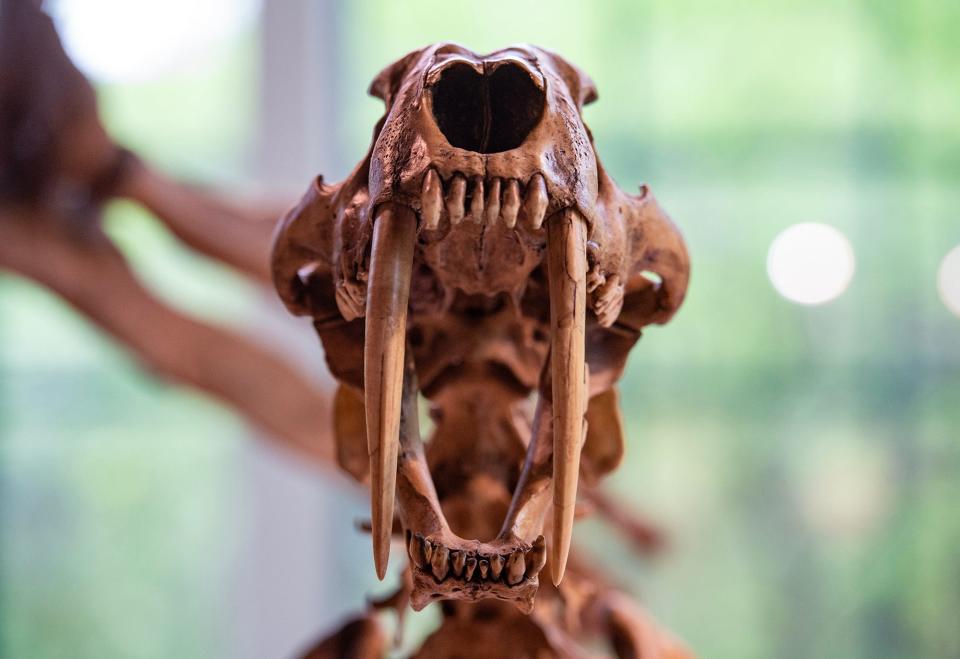Mississippi man finds fossilized remains of saber-toothed tiger dating back 10,000 years
It’s not every day you dig up the fossilized remains of an apex predator.
Unless your name is Eddie Templeton, who recently discovered the crystallized toe bone of a saber-toothed tiger in a creek bed in Yazoo County, Mississippi, according to reporting by the Clarion Ledger, part of the USA TODAY Network.
"I knew it was a mineralized bone …. I knew it was from the Pleistocene (Ice Age), but I didn't know what it was from,” Templeton said. "It's not particularly large or impressive, but it is complete."

Saber-toothed tigers, or smilodon fatalis, are a species of large cat that weighed somewhere between 350 and 620 pounds, making the extinct creature larger than both the modern African lion, the Ledger reported.
The pearly whites on the creature were sharp, with a “scalpel-like” quality, a descriptor given to the “elongated upper canines.” Its tail, on the other hand, was more of a bobcat vibe.
Here’s what we know.
Saber-toothed tiger bone is a ‘rare’ find, expert says
The bone may not look impressive, but finding one certainly is.
There are currently fewer than six fossilized bones of saber-toothed cats in Mississippi's possession, according to George Phillips, a paleontologist at the state's Museum of Natural Science.
“Carnivores are always rare. Carnivores are always smaller populations than what they prey on,” Phillips said.
Other cat species roamed the region alongside the saber-toothed cat, including American lions, jaguars, panthers, bobcats, ocelots and river cats. The Smilodon fatalis might not have been the only cat species to roam the region during the last ice age, but it certainly stood out. The bite from the fearsome predator is considered what some might call “specialized.”
"They're a little larger than a banana," Phillips said of a saber toothed cat's canine teeth. "They're about 10.5 inches long. Slightly more than half of that is embedded in the skull. We're looking at about 5 inches beyond the gum line. It had a well-developed shoulder, neck and jaw musculature. That, coupled with the sabers, contributed to its specialized feeding."
How the teeth were used isn’t clear, with Phillip positing that they were used to deeply penetrate soft tissue such as the underbelly of giant ground sloths or young mastodons. The cat could inflict fatal wounds in one bite with less danger of injuring a tooth and step back and wait for the animal to succumb.
"I think it had to be one blow," Phillips said.
While others maintain that the dagger-like teeth were used to secure prey by the neck.
Saber-tooth tiger was once a top predator, proof seen in remains

The saber-toothed cat’s reign as a top apex predator eventually came to an end because of the arrival of humans, climate change or a combination of those factors.
All that’s left of this “megafauna” and others like it are fossilized remains.
Templeton, who considers himself an avocational archaeologist, he's hopeful that he might be able to find another bone in the same area he hunts for fossils. He hopes that he will be able to procure another piece of one of the giant cats.
"It's got me optimistic I might find a tooth," Templeton said. "That would be a wow moment."
This article originally appeared on USA TODAY: 'Wow': Mississippi man finds 10,000-year-old saber-toothed tiger fossil


